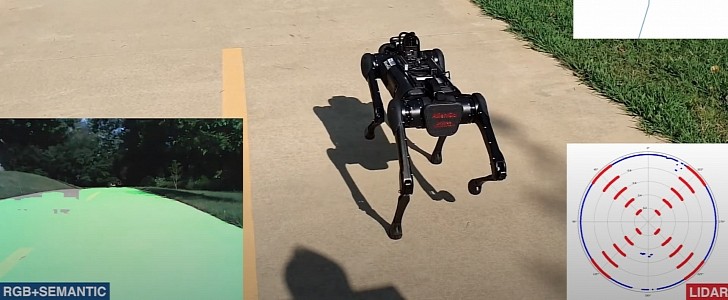We can’t get enough of robots, and we now envision endless uses for them. The next step is to get them out of labs, factories, warehouses, and so on and use them in outdoor environments. And that’s exactly what researchers are working on right now, teaching machines how to navigate sidewalks and walk among us.
Okay, so here’s a quick recap of the latest advancements in robotics. We have our popular Spot and Atlas robots from Boston Dynamics, which know how to parkour, dance, do household chores, detect radiations, inspect high-voltage facilities, and so much more.
Then there’s Digit, the strange-looking humanoid developed by Agile Robotics, which was made for work, being able to carry objects of different sizes and weights, on various types of surfaces. It can even climb stairs.
Cassie is another great example of bipedal machines that can do human-specific activities. Created by researchers at the Oregon State University, the robot completed a 5K run in 53 minutes.
And now we have a new bot on the block, nicknamed AlienGo. This one is the brainchild of researchers at the Georgia Institute of Technology and Stanford University. The goal of the team is to teach robots how to operate autonomously in urban environments, so they can be used for applications such as deliveries, neighborhood patrol, and many other outdoor activities.
AlienGo is a quadruped robot that looks similar to Spot. AlienGo was programmed to follow a route plan generated by public map services. The robot had to avoid real-world obstacles such as people or certain objects while still remaining on the sidewalk.
Researchers used a two-staged framework to achieve their goal, first training what they called a “teacher agent” in an abstract world using a simulator. After that, they applied the same behavior to the “student agent,” which only had access to realistic sensors and had to deal with a real outdoor environment. It all took place in Atlanta. AlienGo managed to walk for approximately 2 miles (3.2 km) with just a limited number of human interventions.
Giving that AlienGo had to cope with all the complexities of the real world just like a newborn, as it had never seen real-world sidewalk images during its training, the results were pretty impressive and encouraging. Researchers plan to continue their work and hope their method could be applied in the future to other robots as well, with the purpose of improving their ability to navigate.
Then there’s Digit, the strange-looking humanoid developed by Agile Robotics, which was made for work, being able to carry objects of different sizes and weights, on various types of surfaces. It can even climb stairs.
Cassie is another great example of bipedal machines that can do human-specific activities. Created by researchers at the Oregon State University, the robot completed a 5K run in 53 minutes.
And now we have a new bot on the block, nicknamed AlienGo. This one is the brainchild of researchers at the Georgia Institute of Technology and Stanford University. The goal of the team is to teach robots how to operate autonomously in urban environments, so they can be used for applications such as deliveries, neighborhood patrol, and many other outdoor activities.
AlienGo is a quadruped robot that looks similar to Spot. AlienGo was programmed to follow a route plan generated by public map services. The robot had to avoid real-world obstacles such as people or certain objects while still remaining on the sidewalk.
Researchers used a two-staged framework to achieve their goal, first training what they called a “teacher agent” in an abstract world using a simulator. After that, they applied the same behavior to the “student agent,” which only had access to realistic sensors and had to deal with a real outdoor environment. It all took place in Atlanta. AlienGo managed to walk for approximately 2 miles (3.2 km) with just a limited number of human interventions.
Giving that AlienGo had to cope with all the complexities of the real world just like a newborn, as it had never seen real-world sidewalk images during its training, the results were pretty impressive and encouraging. Researchers plan to continue their work and hope their method could be applied in the future to other robots as well, with the purpose of improving their ability to navigate.







